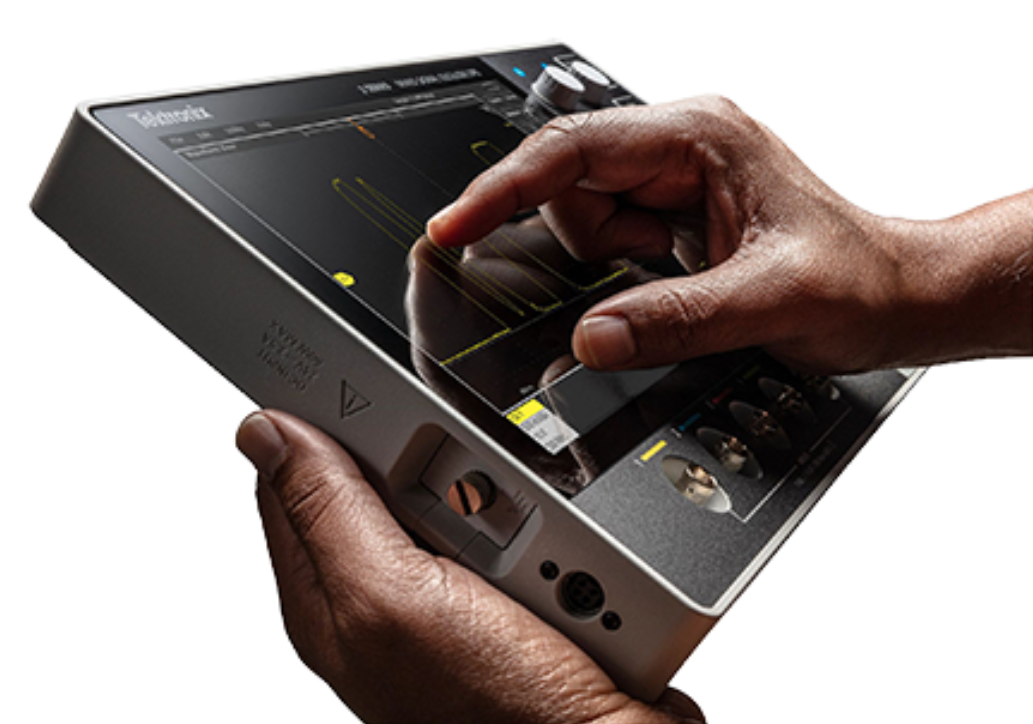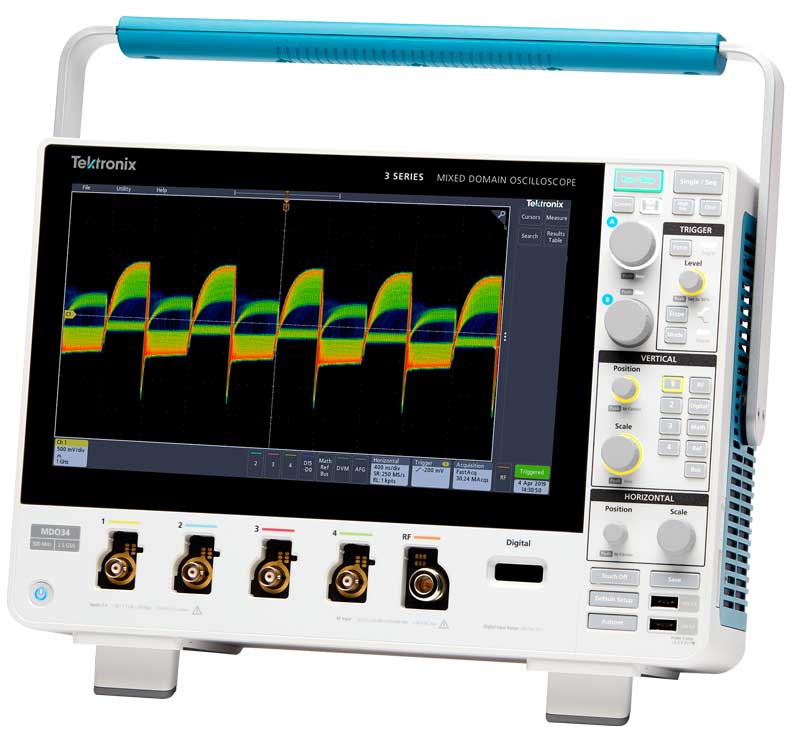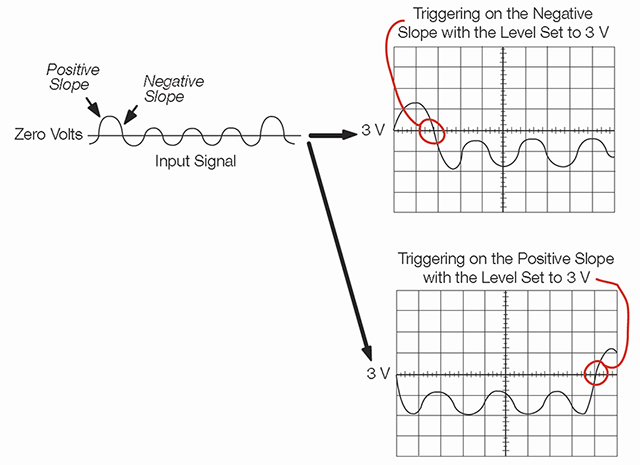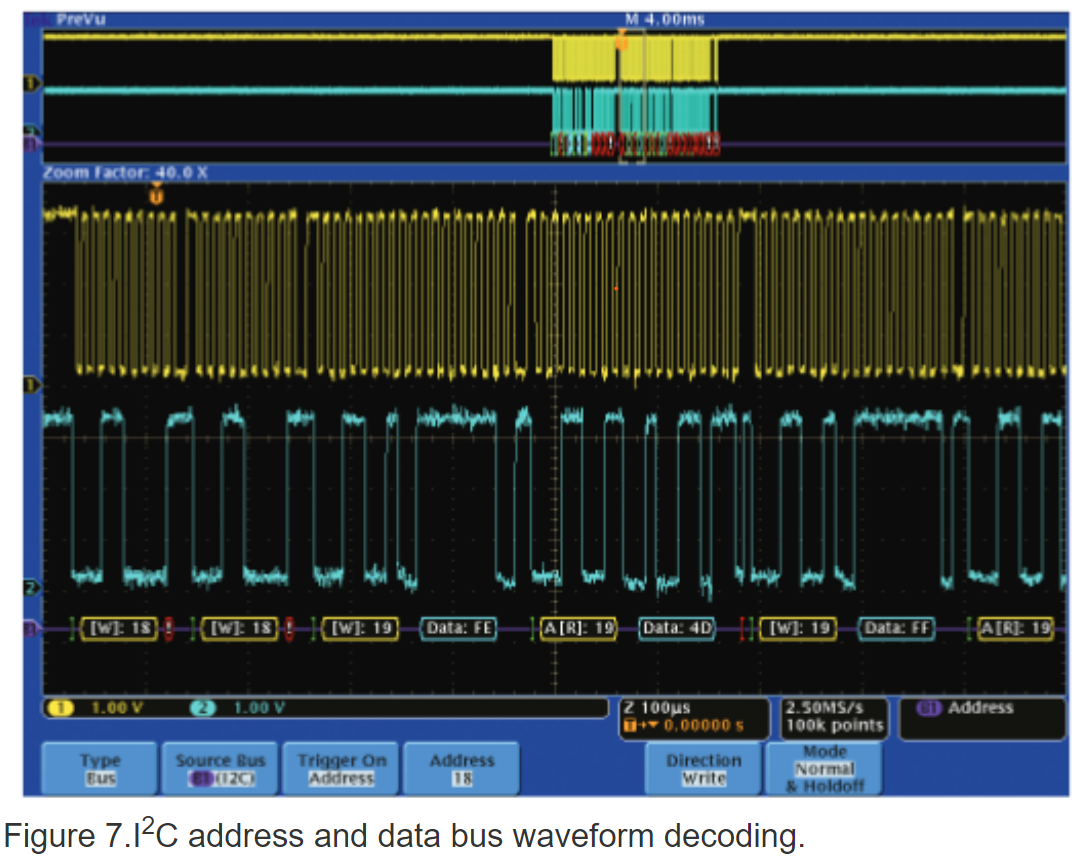與我們聯絡
與 Tek 業務代表即時對談。 上班時間:上午 6:00 - 下午 4:30 (太平洋時間)
請致電
與 Tek 業務代表即時對談。 上班時間:上午 8:30 - 下午 5:30 (太平洋時間)
下載
下載手冊、產品規格表、軟體等等:
意見回饋
Digital Storage Oscilloscopes (DSO)
A digital storage oscilloscope (DSO) is a fundamental tool used in electrical engineering and electronics design, offering a digital approach to signal analysis that surpasses the capabilities of traditional analog oscilloscopes. With a DSO, professionals and enthusiasts alike can capture, store, and analyze complex electronic signals, facilitating a deeper understanding of electrical phenomena.
What is a DSO?
A DSO is an instrument that captures and stores digital representations of electrical signals. Unlike its analog predecessors that relied on phosphor to display signals, DSOs use a digital screen to render waveform data, enabling a more versatile and detailed examination of electrical signals. This also allows more specialized analysis tools to be utilized on the instrument.
Key Features of DSOs:
- Permanent Signal Storage: Waveforms captured by a DSO are stored in digital form, allowing for easy retrieval, analysis, and sharing.
- Advanced Waveform Processing: DSOs can manipulate stored waveforms in ways that analog oscilloscopes cannot, such as zooming in on specific parts of a signal or applying mathematical functions for in-depth analysis.
- Enhanced Visibility of Transients: The ability to freeze and examine single-shot events makes DSOs invaluable for troubleshooting intermittent problems in electronic circuits.
The Inner Workings of a DSO
The functionality of a DSO focuses its ability to convert analog signals into a digital format that can be stored, analyzed, and displayed. This conversion process is spearheaded by the Analog to Digital Converter (ADC), which samples the incoming signal at a high rate, capturing its amplitude at discrete points in time. The vertical amplifier ensures that the signal is within the optimal range for conversion by the ADC, preserving the integrity of the waveform.
Once digitized, the data is stored in the oscilloscope's deep memory, allowing for the retention of high-resolution waveforms over extended time periods. Advanced algorithms within the DSO then process this data, enabling users to apply a variety of mathematical analyses and filtering techniques to dissect the signal's characteristics further.

Beyond DSOs: Exploring the Spectrum of Oscilloscopes
The landscape of oscilloscopes is diverse, with each type tailored to specific applications.
Analog Oscilloscopes
These traditional scopes offer real-time signal display with a direct view of the waveform with minimal processing delay, making them ideal for education and straightforward applications where digital depth and analysis are not critical.
See Analog OscilloscopesDigital Oscilloscopes
In many cases DSO features are blended with other signal types to produce a fuller functioning instrument.


MDOs provide a unified platform for observing and analyzing signals across different domains—time, frequency, and even protocol—offering an unprecedented view into the complex interactions within RF and mixed-signal environments.
See Digital OscilloscopesReal-Time vs. Sampling Scopes
The choice between real-time and sampling oscilloscopes hinges on the specific requirements of the signal analysis:
- Real-Time Oscilloscopes: These are designed to capture and display signals as they happen, with minimal latency. Their capability is especially valuable for observing transient or rapidly changing events, making them useful in troubleshooting and design validation.
- Sampling Oscilloscopes: Optimized for high-frequency signals that are repetitive in nature, sampling oscilloscopes reconstruct a waveform by capturing snapshots over multiple cycles. This method allows for the analysis of high-bandwidth signals beyond the direct capture capabilities of real-time scopes.
Advanced DSO Features and Analysis Techniques
Waveform Capture and Analysis Techniques
Digital Storage Oscilloscopes (DSOs) revolutionized the way waveforms are captured and analyzed, providing engineers and technicians with powerful tools to diagnose and solve complex electronic issues. At the heart of a DSO's capability is its sampling rate, which determines how often the signal is measured. This rate, expressed in samples per second (S/s), is crucial for accurately reconstructing a signal. The higher the sampling rate, the more detailed the captured waveform, allowing for a precise representation of the original signal.Memory depth, or amount of information that can be stored, is another key feature. This allows capturing of long stretches of a signal to analyze events that occur sporadically or over extended periods. The combination of high sampling rates and deep memory enables DSOs to capture transient events—those fleeting anomalies that can cause the most elusive problems in electronic circuits.
Once a waveform is captured, DSOs offer extensive processing capabilities. Waveforms can be analyzed in both the time and frequency domains, with the Fast Fourier Transform (FFT) function allowing engineers to dissect signal behavior in the frequency domain, revealing harmonic content, noise, and other characteristics not visible in the time domain.


Signal Integrity and Accuracy
Ensuring signal integrity is paramount in waveform analysis. DSOs are designed to accurately capture and represent signals, taking into account factors like vertical resolution and bandwidth. Vertical resolution, measured in bits, determines the DSO's ability to discern small signal variations—a higher resolution means more detail and less quantization noise. Bandwidth, on the other hand, defines the range of frequencies the oscilloscope can accurately measure. A rule of thumb is to use a DSO with a bandwidth five times higher than the highest frequency component of the signal being measured to ensure fidelity.

Advanced Triggering Options
Triggering allows a DSO to capture specific signal events of interest. Advanced triggering options extend beyond simple edge triggers, enabling the capture of complex sequences, pulses of specific widths, or even rare glitch events. For instance, a DSO might offer pulse width triggering to capture only those pulses that exceed a certain duration, or pattern triggering to capture a specific sequence of digital events. These sophisticated triggering mechanisms enable users to isolate and analyze specific behaviors within a signal, making it easier to diagnose problems in complex digital systems.


Serial Decoding and Protocol Analysis
Many modern DSOs come equipped with serial decoding and protocol analysis capabilities. These features allow the oscilloscope to interpret serial communication protocols such as I2C, SPI, UART/RS-232, CAN, and more. This means that engineers can directly view and analyze the data being transmitted over these buses, including start/stop bits, data packets, and error-checking information. This capability is invaluable for debugging digital communication links and ensuring interoperability between components in embedded systems.
Oscilloscope Frequently Asked Questions About DSOs
What is the memory depth of the DSO?
Memory depth is a critical specification of a DSO, defining the total number of waveform points the oscilloscope can store. A greater memory depth enables the oscilloscope to capture longer waveforms at a high sampling rate, crucial for detailed analysis over extended timeframes.
Does the DSO have triggering capabilities?
Yes, DSOs are equipped with sophisticated triggering systems that allow users to specify conditions under which the oscilloscope captures data. This feature is vital for isolating events of interest within a signal, facilitating focused analysis.
Can the DSO perform automated measurements?
Modern DSOs often feature automated measurement capabilities, enabling the instrument to compute key signal parameters such as amplitude, frequency, and rise time without manual intervention, enhancing efficiency and accuracy in signal analysis.
What is the user interface like?
The user interface of a DSO is designed for clarity and ease of use, often featuring intuitive controls, touchscreens, and graphical displays. A well-designed interface allows engineers to navigate functions efficiently, streamlining the analysis process.
What kind of probes are compatible with the DSO?
DSOs support a range of probes, including passive, active, current, and differential types, each suited to specific measurement tasks. The choice of probe depends on the signal characteristics and the specific requirements of the measurement.
What kind of triggering options are available on the DSO?
DSOs offer various triggering options, including edge, pulse, video, and pattern triggers, among others. These options allow engineers to capture specific signal behaviors, aiding in the diagnosis and characterization of complex electronic systems.
Is the DSO portable?
DSOs are available in both benchtop and portable formats. Portable DSOs are designed for fieldwork or situations where mobility is essential, often featuring rugged builds and battery operation, albeit with some trade-offs in performance and screen size.
What kind of connectivity options does the DSO have?
Connectivity options in DSOs may include USB, Ethernet, Wi-Fi, and GPIB, facilitating data transfer, remote control, and integration with other test equipment or networks, enhancing workflow and data management.
What is the DSO's signal integrity?
Signal integrity in DSOs refers to the fidelity with which the oscilloscope represents the real signal, encompassing aspects like bandwidth, noise level, and distortion. High signal integrity is crucial for accurate and reliable measurements, especially in sensitive or high-frequency applications.
Can the DSO perform advanced math functions?
Many DSOs are capable of advanced mathematical functions, such as Fast Fourier Transform (FFT) for spectral analysis, waveform arithmetic, and filtering, enabling deeper insight into signal characteristics and behaviors.
What kind of data analysis software is compatible with the DSO?
DSOs often support integration with specialized data analysis software, providing enhanced capabilities for data visualization, reporting, and in-depth analysis, extending the utility of the oscilloscope beyond basic waveform observation.
What is the DSO's total harmonic distortion (THD)?
THD in a DSO quantifies the level of harmonic distortion present in the measured signal, attributable to the oscilloscope itself. Low THD values are desirable for accurate representation of the original signal, particularly in audio and power quality applications.
What is the DSO's noise floor?
The noise floor of a DSO indicates the lowest level of signal that can be distinguished from the oscilloscope's inherent noise. A lower noise floor is essential for accurate measurement of low-amplitude signals, ensuring that the true signal is not obscured by the oscilloscope's internal noise.
Can the DSO perform real-time eye diagram analysis?
Some advanced DSOs offer real-time eye diagram analysis, a powerful tool for evaluating the quality of digital signals. This feature is particularly useful in telecommunications and data communications for assessing signal integrity and identifying issues like jitter and noise.


